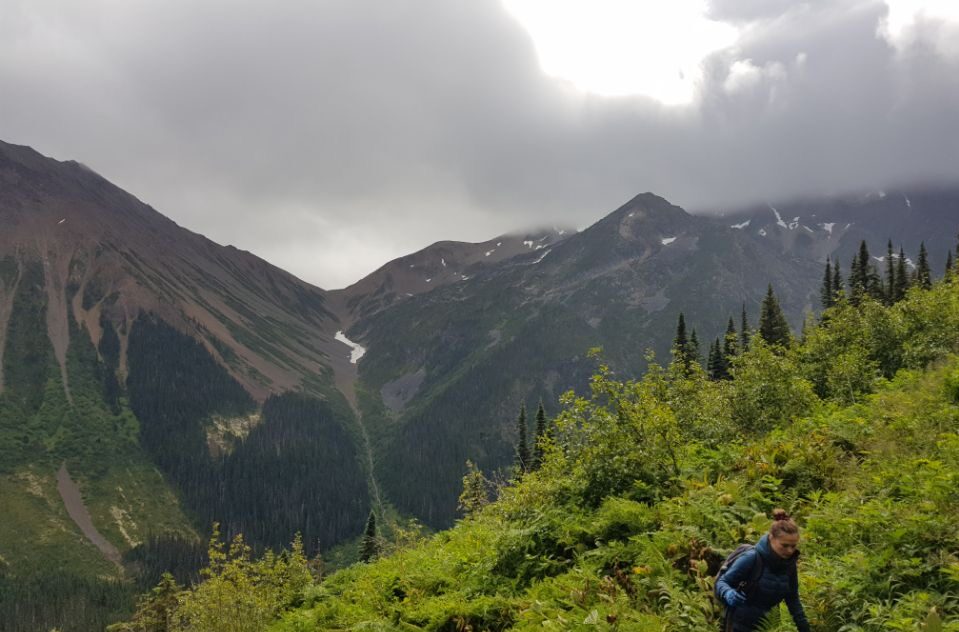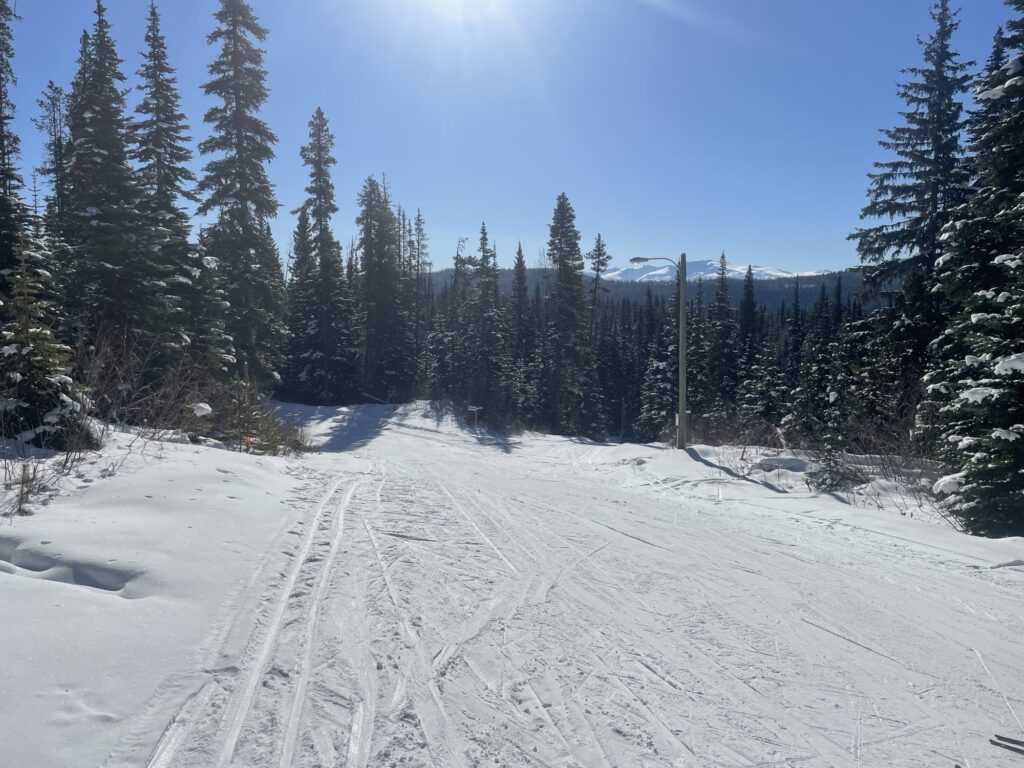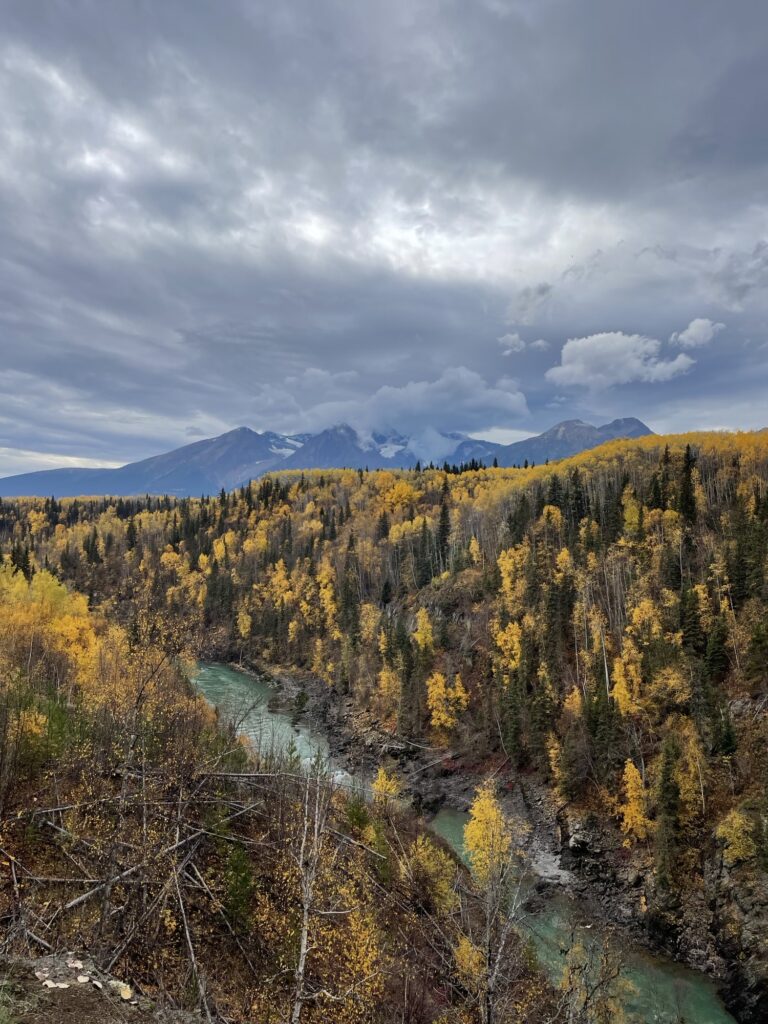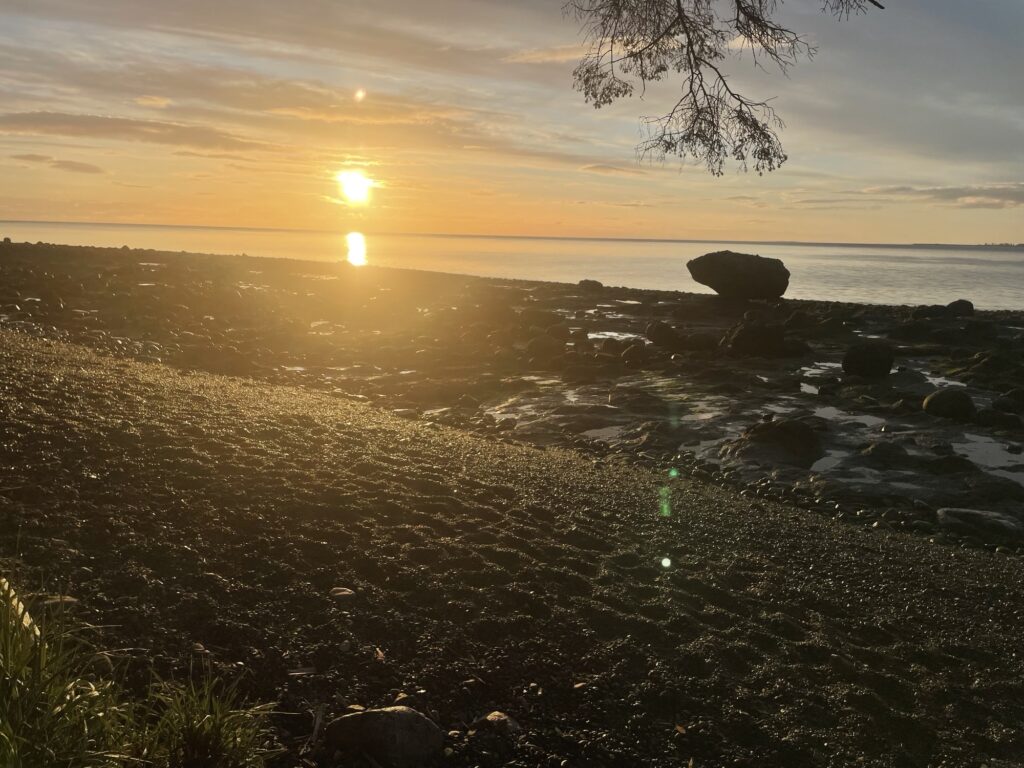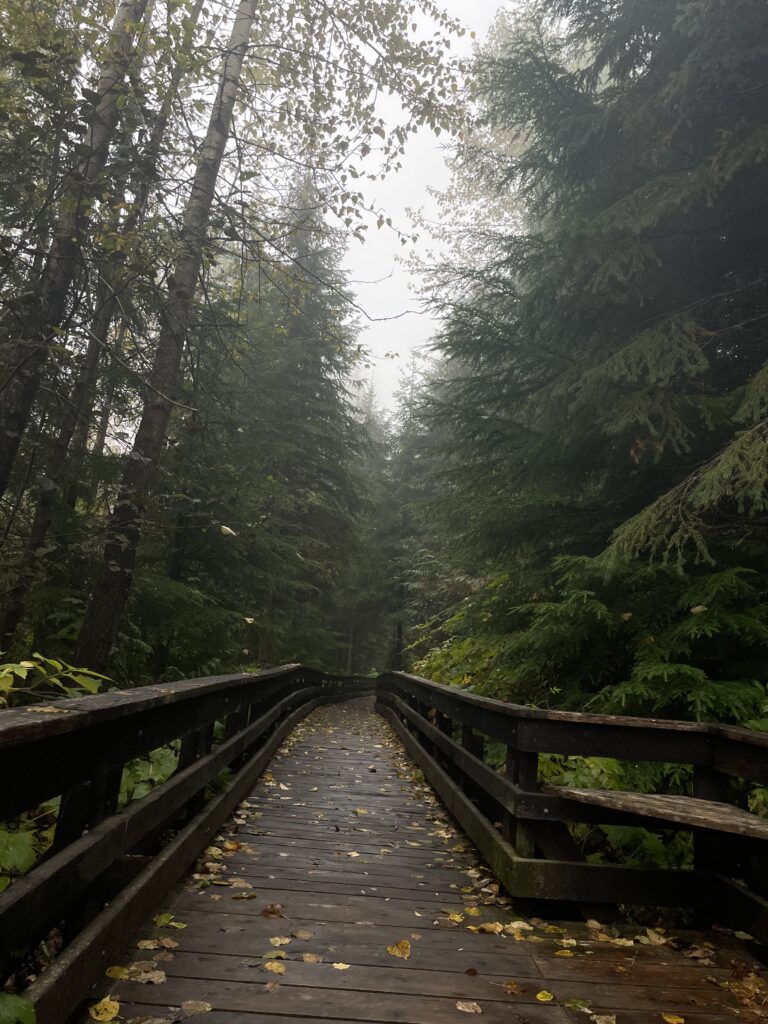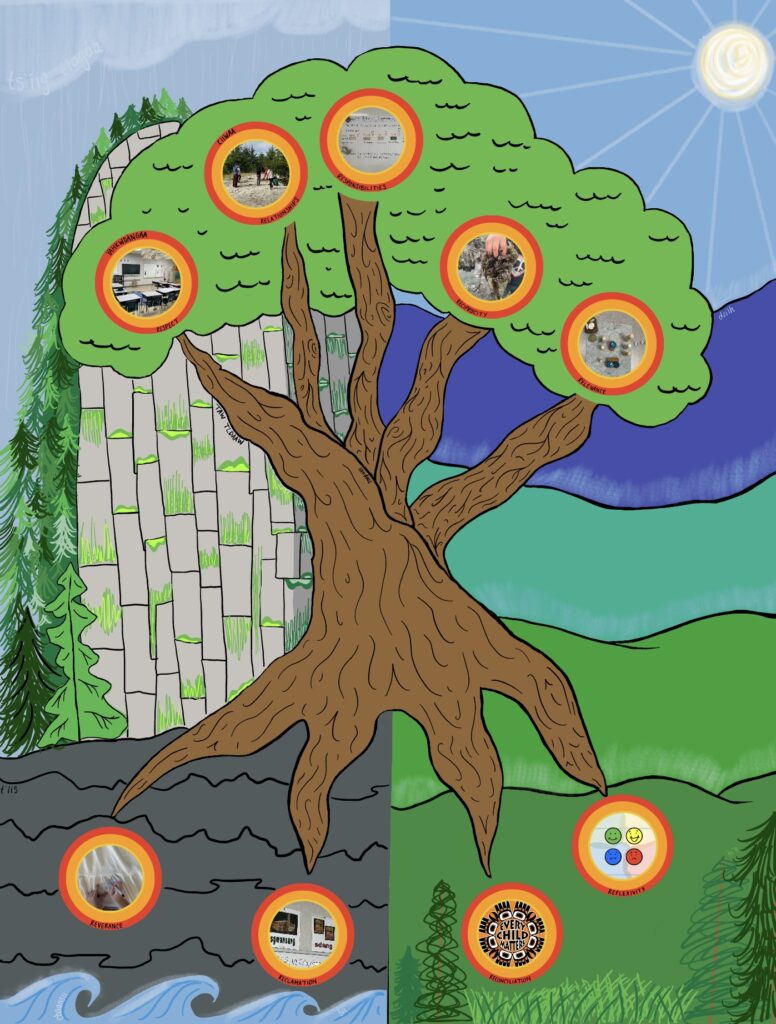Science – Mountain Ecosystems
I did a unit on mountain ecosystems with my Grade 2/3 class in Smithers BC. I selected the mountain ecosystem because Hudson Bay Mountain is a very central component to Smithers. All of the students see the mountains every day and they were frequently cross-country skiing at the time as a class making this ecosystem relevant for the learners. Each section will go through the lessons taught and resources I made associated with that lesson followed by any reflections I had afterwards.
Lesson 1 – Determining the Difference Between Living and Non-Living Things
To begin scaffolding, I brought students to the carpet and we talked about what an ecosystem was and the difference between living and non-living things. We then went on a walk to a nearby trail to identify living and non-living things. (We saw a moose on the trail which wasn’t planned, but an awesome visual!) It was really fun listening to their conversations amongst them about what’s living and what’s not.
We came back to the classroom and made a T-chart with living things on one side and non-living things on the other. As an interactive feature, students had the opportunity to come up and write what they found under the category which they enjoyed.
Reflection: One thing I wanted to work on during this practicum was pacing and making sure that I was making purposeful use of lesson time. I felt that the pacing went well during the lesson. Students were engaged throughout the lesson. It was fun to listen to them talk about their peers about the living and non-living things that they saw along the walk. We saw a moose on our walk which was unplanned, but very cool. The class can get easily distracted. If I were to do this lesson again, I would consider a route that avoids the playground and other possible distractions. The intentional outdoor walk gave learners the opportunity to connect with their environment and notice what is around them and their school. This ties in well with FPPL and Standard 1 and 9. The lesson connected with this through engaging with placed based learning, experiential learning, and valuing all perspectives. The chart paper was a great interactive component, but moving forward I would give students the option to draw as well to accommodate many different learning styles.
Lesson 2 – Producers in Mountain Ecosystems
I took pictures from various local hikes and added them to a PowerPoint presentation. I flipped through each photo and asked students to share what they noticed. The students were really eager to share which was awesome and we had a great group discussion which was awesome to see especially for a primary class. Below are the photos I included in my lesson.




Following this activity, students were given a “mountain ecosystem scene” to color and then different types of producers to cut and paste onto their scene to familiarize themselves with the plants that exist in mountain ecosystems.
Reflections: The lesson allowed for students to connect curricular content to the local landscape. Some of the students have been to some of the photographed locations which was really cool and it made that connection very clear. I was happy with the level of engagement and felt that students were reaching the learning target. Students were wanting a demonstration of where to put their producers on their mountain scene which I did not anticipate. This is something I will consider for the next time I teach this unit or use this particular demonstration of learning.
Lesson 3 – Consumers in Mountain Ecosystems
This was my favorite lesson out of the entire unit. The students were really engaged and had a really fun time as they got to play a game. We began by reading Mountain Animals by David West which talks about animals in mountain ecosystems around the world. I created a game based on the book we read for students to gain knowledge on consumers in the mountains which also ended up serving as a reading comprehension exercise.
I had pictures of all of the animals included in the book on a sheet of paper and gave each student a counter. I had a PowerPoint with three clues describing the animal and students would have to place their counter which animal they think the answer is based on the provided clues. Attached below is the gameboard and the PowerPoint for this game available for use and download.
Lesson 4 – Food Chains & Webs
The lesson was intended to bring what we have learned about producers and consumers and bringing them together while learning about decomposers and predators. I did not create the resources and activities used for this lesson therefore they are not attached. The resources were recommended by one of my amazing coaching teachers that I had the pleasure of learning from. The resources provided did a really amazing job of tying everything together.
How we structured this was we had 3 different exercise options where students could choose what they wanted to learn about. All of them had the do with food chains and webs. This allowed for all students to access the content with opportunities to extend.
Reflection: Students were able to connect the learning activity to the book that we read to begin the lesson, which went well. Students grasped the interconnectedness of living and non-living things in mountain ecosystem. Students were able to choose an activity that they were interested in which I was happy about and were taking risks by learning new vocabulary (carnivore, herbivore, and omnivore). They were going beyond memorizing and by the end of the learning activity could tell me what they were and some distinct features about each one. Students were able to learn in a way that was effective and meaningful to them. Offering choice was effective and is something that I will apply in future lessons. Finishing the lesson by sharing what we learned tied into the community element and allowed students to verbalize what they learned with their peers, which coincides with FPPL. I am confident that students are prepared for the summative model they will be making to close the unit next Monday and Tuesday. I feel that overall students grasped the concept, however I feel that they were not as engaged as they were in previous lessons. This could have been because it was a Friday afternoon as well. The learning activities were not as hands-on as the past lessons have been, so I wonder if that had something to do with it. Although the worksheets and packages are good to mix in once and a while the hands – on lessons were where I felt I had 100% engagement. Next time I may need a hands-on component to lead up to some worksheets and packages for learners to complete. A way that I worked within the Professional Standards was when I designed this lesson I wanted to create as many access points as I could and I feel that I used UDL to reach the all, the most, and the few. Having choice worked well. As previously mentioned all students were able to complete a learning activity that was meaningful and interesting to them which I was happy about. Students grasped the connectedness of nature, animals, and the land which works well with Standard 9.
Lesson 5 & 6 – Summative Dioramas
For the summative demonstration of learning the students built dioramas of a mountain ecosystem. The students love hands on work and they love art, so I felt that this would be an accessible way for the students to show what they know. They needed to include a producer, consumer, predator, and decomposer. The rest of their project was completely up to them. Afterwards, each student presented to the class using the document camera and explaining their project.
Below are some examples of what the students came up with. These photos were taken after the first day of building so they are not quite finished.
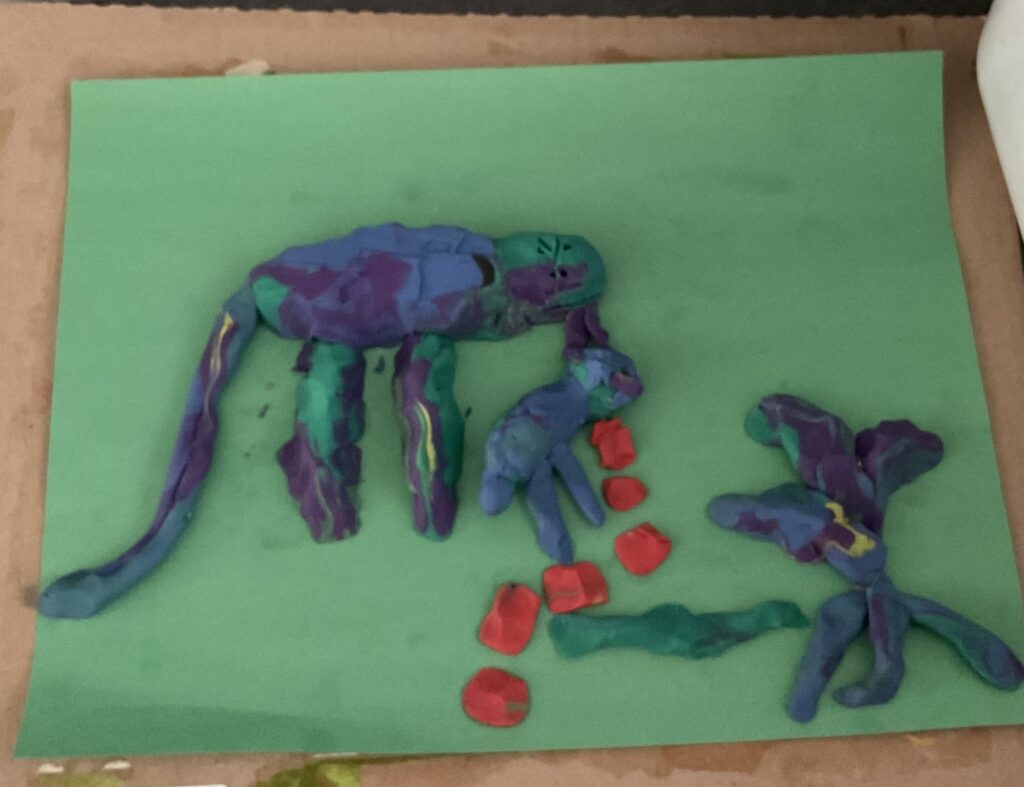
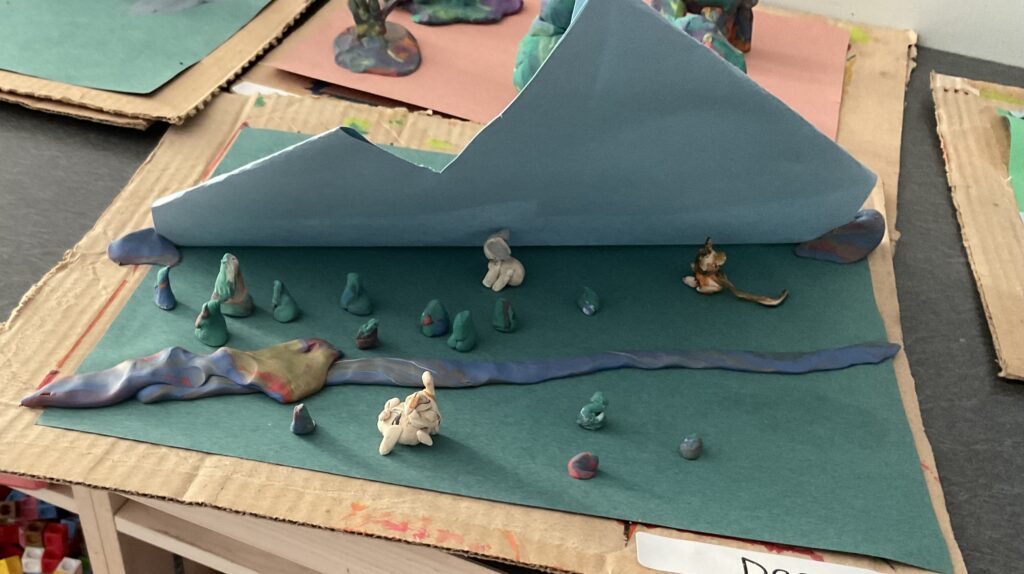
Reflection Day One: Today the students were extremely engaged once they got going. There was some confusion about what the habitats were to look like. This is where an example would come in handy, but I wanted them to be creative and create something that was meaningful to them that was not influenced by a sample in any way. I felt that my instructions could have been clearer, which is something I want to work on for the next time we do a creative project like this. We did a brief brainstorm to go over the lessons/concepts we covered last week which was good as it took some time for students to refresh their memories. It was fun seeing them get creative and demonstrate their learning. All of the ecosystems they created were unique and reflected upon what they thought was interesting during the unit. This lesson set us up well for the final lesson in the unit in which students will get to share their work with peers. With this group, experiential learning and hands on assignments work well and they engage all of the students. This lesson was designed so all students could participate and feel successful. This lesson reflected Standard 1 as it valued the success of all students and their learning styles.
Reflection Day Two: Students continued to work on their ecosystem model for the first half of the lesson and did mini presentations during the second half. Frontloading the lesson again and offering extra reminders of what expectations and criteria were helpful as students finished. There were many that did not have all 4 elements of the food chain in their models (producers, consumers, predators, decomposers), so the remaining time gave them space to complete the assignment. They were excited to share what they were working on with the class, even students who are not typically vocal really wanted to share. A tweak that my CT suggested was having visuals for students who struggle with reading. During Day One we went over the 4 parts of the food chain and came up with examples that I wrote on the board which can be difficult for students who struggle with reading. She suggested drawing some photos beside the examples (drawing grass beside the word grass) to help reach those students. This would be something I would add if I were to do this lesson again. A majority of the students were proficient. This lesson gave me an opportunity to practice summative assessment. As students presented, I took notes that if I were to report home to parents, I could include in comments and apply to a rubric. Originally, I wanted to engage in a Talking Circle. The group would have struggled with sitting for a prolonged period of time at the end of the day. Instead, we used the overhead projector which students enjoyed using and it made it easier for others to see their work. They enjoyed sharing their work with their peers which was awesome to see.
That concludes the content on a Mountain Ecosystems unit curated for a Grade 2/3 class (but can be adapted to meet the needs of any grade or individual learners). Mussi Cho for reading and I hope you found this helpful.
